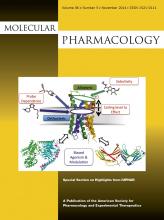Abstract
We previously demonstrated that the overexpression of transient receptor potential channel C5 (TRPC5) and nuclear factor of activated T-cells isoform c3 (NFATC3) are essential for cancer chemoresistance, but how TRPC5 and NFATC3 are regulated was still unclear. In this study, microRNA 320a (miR-320a) was found to be down-regulated in chemoresistant cancer cells. MiR-320a directly targeted TRPC5 and NFATC3, and down-regulation of miR-320a triggered TRPC5 and NFATC3 overexpression. In chemoresistant cells, down-regulation of miR-320a was associated with regulation by methylation, which implicated promoter methylation of the miR-320a coding sequence. Furthermore, the transcription factor v-ets erythroblastosis virus E26 oncogene homolog 1 (ETS-1), which inhibited miR-320a expression, was activated in chemoresistant cancer cells; such activation was associated with hypomethylation of the ETS-1 promoter. Lastly, the down-regulation of miR-320a and high expression of TRPC5, NFATC3, and ETS-1 were verified in clinically chemoresistant samples. Low expression of MiR-320a was also found to be a significant unfavorable predictor for clinic outcome. In conclusion, miR-320a is a mediator of chemoresistance by targeting TRPC5 and NFATC3. Expression of miR-320a is regulated by methylation of its promoter and that of ETS-1.
Footnotes
- Received March 20, 2014.
- Accepted August 26, 2014.
D.-X.H. and X.-T.G. contributed equally to this work.
This work was supported by grants from the National Natural Science Foundation of China [Grants 81100185, 31200126, and 31371317], the Natural Science Foundation of Jiangsu Province [BK20141109], and the Natural Science Foundation for Distinguished Young Scholars of Jiangsu Province [BK20140004].
↵
 This article has supplemental material available at molpharm.aspetjournals.org.
This article has supplemental material available at molpharm.aspetjournals.org.
- Copyright © 2014 by The American Society for Pharmacology and Experimental Therapeutics
MolPharm articles become freely available 12 months after publication, and remain freely available for 5 years.Non-open access articles that fall outside this five year window are available only to institutional subscribers and current ASPET members, or through the article purchase feature at the bottom of the page.
|







